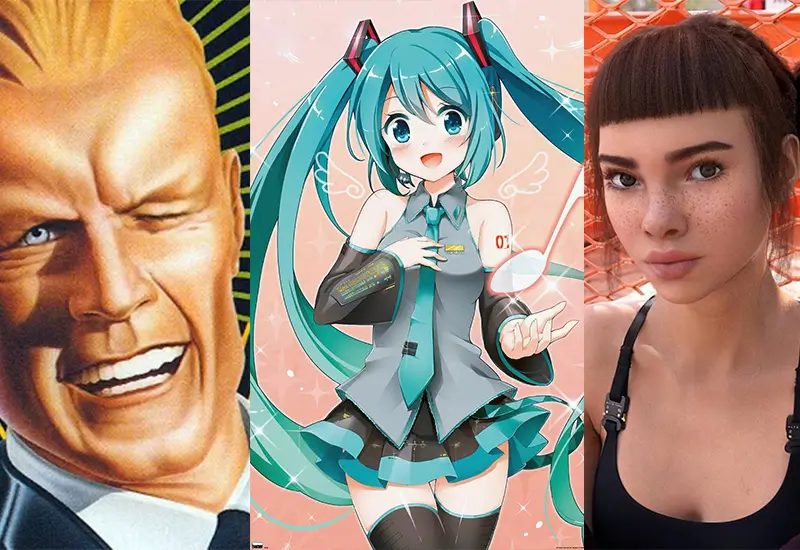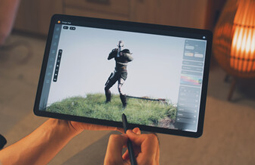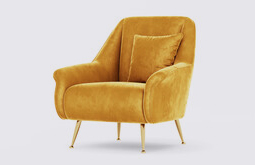Virtual Models and Their Benefits for eCommerce Fashion
Virtual models are exactly what they sound like- human-looking characters made using computer graphics. They’ve become quite popular in fashion eCommerce, as the industry is well known for using the latest technologies for promotional stunts.

But why are fashion brands using virtual models? And should you make one to promote your clothing company? Before answering this question, we should learn about fictional avatars and their benefits.
What is a virtual model?
A virtual model or avatar is a three-dimensional, fictitious person or character made to look like real-life models and made using 3D modeling, animation, machine learning, and artificial intelligence (AI). Sometimes, they look so realistic that you can’t tell them apart from real humans.
Since they are made entirely on a computer, you can manipulate their appearance (size, shape, height, skin tone, and features) in accordance with your brand. And once they're ready to render, you can put them in different 3D scenes, change the lighting conditions, and make them strike any pose.
A brief timeline of virtual characters

As hard as it is to imagine, virtual characters have been around since 1987, when Max Headroom was created to be a TV presenter. Since then, there have been many virtual characters, one of the famous ones being vocaloids like Hatsune Miku. At present, there are multitudes of virtual characters who are either social media influencers, fashion models, or both. Lil Miquela, for example, is a famous AI influencer (as they are more commonly called) with millions of followers on Instagram and TikTok. She is also stated to be the fashion industry’s first virtual influencer and has worked with top brands like Dior, Prada, Chanel, and Calvin Klein.
Benefits of virtual models in fashion eCommerce
-
Visually appealing

Avatars are, visually speaking, a step up from the ghost mannequins that have been popular for a while now. With ghost mannequins, you can pose them in only one way – standing – because no other pose can be seen. However, you can pose the avatars in various ways to showcase the movement of your clothing. Plus, you can see exactly how the clothes wrap around the model, making the visuals far more appealing than when an invisible mannequin is involved (as seen below).
-
Cost-effective
Digital avatars reduce the costs usually associated with traditional product photoshoots. The latter involves heavy costs, like travel, stay, rent, etc., not to mention the fees for hiring models/influencers and photographers.
However, for virtual models, you only need a 3D artist who’s skilled at creating realistic models that are indistinguishable from humans.
-
Complete control
With virtual modes, you’re in complete control of every aspect of their identity (including their physical appearance and personality). They will look like, do, and say according to your instructions. Therefore, you can always rest assured that they align with your brand messaging and values. They won’t misbehave and damage your brand image.
-
Consistent presentations
When you render an image or video of the model, you set everything from the scene to the pose. As a result, you can ensure uniformity in the presentation of your clothing across all your eCommerce sites and online stores.
-
Inclusivity and diversity
Since you are in full control of the design, you can create virtual fashion models that represent a wide range of skin tones, body types, physical features, etc. With these virtual characters, you’ll find that it is much easier to showcase your clothing and apparel for a diverse customer base.
-
Quick adaptation to change
Creating a virtual model for the first time might take a while, but once it’s done, changing, modifying, and adapting the model takes only a few clicks. It reduces costs and lets you respond quickly to trends and inventory issues.
-
Reusable
You can reuse the same model multiple times for any number of promotional campaigns for as long as you want. You just have to change their appearance, pose them differently, and place them in different 3D environments, depending on the ad. The best part is that all these changes can be made in a short period of time.
-
Unrestricted creativity
Virtual models aren’t real, so you can get creative with the settings, appearance, and stances, and even break the rules of physics for the perfect shot. You are no longer bound by forces like gravity.
-
Customer engagement
If you allow the customer to personalize the virtual avatars, they become more engaged in the shopping experience. Some online stores allow their customers to create an avatar after themselves for virtual try-ons. They can put the clothes on their avatar and see whether the fit, style, and color suit them. The process makes customers more excited about the experience, and they make accurate purchases, leading to fewer returns.
-
Increase sustainability
Digital avatars almost eliminate the need for you to hold photo shoots. It makes your company far more sustainable as you are reducing your carbon footprint associated with travel, accommodation, and other logistics.
Conclusion
Virtual models and AI influencers are becoming more common and, somehow, more popular with people. So many of them have social media followers in the millions and have even become a voice for issues like women's empowerment. Naturally, top fashion brands like Chanel, Prada, and Louis Vuitton took notice of and even partnered with them in their marketing.
It’s safe to say that digital characters will only become more established in fashion eCommerce and marketing as time moves on. So, now is the best time to get your own virtual model to start modeling your fashion products.




